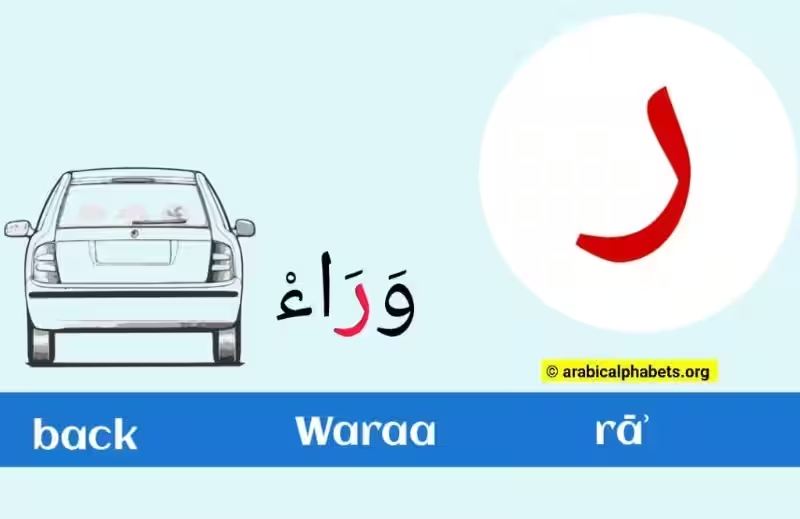
The Arabic alphabet, a system of writing that has shaped countless languages and cultures, presents a unique challenge for those unfamiliar with its intricacies. While the alphabet encompasses a wide range of sounds, it lacks a dedicated letter for the “v” sound. This absence sparks a fascinating inquiry: how do Arabic speakers navigate the pronunciation of words containing the “v” sound?
A “Ve” for a “V” Sound: Exploring Arabic Adaptation
The Arabic letter “ve” (ڤ), a variant of the letter “fāʾ” (ف), stands as a testament to the adaptability and evolution of language systems. While not a fully independent letter in standard Arabic, “ve” plays a crucial role in representing the “v” sound in various contexts.
Beyond Standard Arabic: Unveiling the “Ve” in Dialects and Languages
While standard Arabic doesn’t officially recognize “ve” as a distinct letter, several Arabic dialects and related languages have incorporated it into their writing systems. This adaptation reflects the need to represent sounds that are not inherently present in the standard Arabic alphabet.
Egyptian Arabic: In the vibrant dialect of Egyptian Arabic, “ve” is referred to as “fe be talat noʾaṭ” (فه بتلات نقط, “Fa’ with three dots”). It serves a similar function as in standard Arabic, representing the “v” sound in loanwords and foreign names.
Hijazi Arabic: The Hijazi dialect, spoken in the western region of Saudi Arabia, also employs “ve” to denote the “v” sound. Interestingly, Hijazi speakers often use “ve” interchangeably with “fāʾ” (ف), highlighting the fluidity and adaptability of language in practice.
Persian: While “ve” initially held a more prominent role in Persian, representing the bilabial fricative /β/, its usage gradually faded with the shift of /β/ to /b/ in modern Persian. Today, “ve” is considered obsolete in the language.
Kurdish: The Kurdish-Arabic alphabet, a fascinating blend of Arabic and Kurdish elements, incorporates “ve” as a distinct letter, representing the /v/ sound. This demonstrates the integration of “ve” into a language system beyond its initial Arabic context.
Yidgha: In the Yidgha language, spoken in the Wakhan Corridor region of Afghanistan, “ve” occupies the 34th position in the Yidgha abjad (alphabet). This reinforces the diverse applications of “ve” across different languages and geographical regions.
Malay: While not directly part of the Arabic alphabet, “ve” plays a unique role in the Jawi script, a variant of the Arabic script used to write the Malay language. Here, “ve” represents the /p/ sound, showcasing the adaptability of Arabic script to represent sounds beyond its original scope.
The “Ve” in the World: A Glimpse into Linguistic Diversity
The presence of “ve” in various languages and dialects reflects a broader phenomenon: the constant evolution and adaptation of writing systems to accommodate new sounds and linguistic influences. This phenomenon highlights the inherent flexibility and dynamism of language, as it adapts to changing needs and influences.
Navigating the “V” Sound in Arabic: A Journey Through Pronunciation Strategies
Despite the absence of a dedicated letter for “v” in standard Arabic, speakers have developed ingenious strategies to approximate the sound. These strategies, rooted in the existing alphabet and pronunciation patterns, offer a glimpse into the creative ways language adapts to express sounds that are not inherently part of its system.
The “W” Substitute: A Common Approach
One of the most frequent strategies employed by Arabic speakers is using the letter “w” (و) to approximate the “v” sound. This approach is particularly common when the “v” sound appears between vowels or at the beginning of a word.
For instance, the English word “victory” would be pronounced “viktori” in English, but in Arabic, it would sound closer to “wiktori.” This substitution, while effective in conveying the general sound, introduces a subtle shift in pronunciation, as the “w” sound tends to be softer and less forceful than “v.”
The “B” Alternative: A Closer Approximation
When the “v” sound appears at the end of a word, Arabic speakers often use the letter “b” (ب) to represent it. This approach, while introducing a slight difference in pronunciation, is generally considered a closer approximation than using “w.” For example, the English word “love” would be pronounced “lav” in English, but in Arabic, it might sound closer to “lub.”
The “F” Option: A Less Common Strategy
In certain contexts, Arabic speakers utilize the letter “f” (ف) to represent the “v” sound. This strategy is primarily used in loanwords where the “v” sound appears in specific positions, like the middle of a word. For instance, the English word “vitamin” might sound closer to “vitamin” in Arabic, with the “v” replaced by “f.”
The “Double B” Workaround: A More Formal Approach
A more complex strategy involves using a double “b” (بب) to represent the “v” sound. This approach is often employed in formal settings or when emphasizing the “v” sound. While this pronunciation is closer to the original sound, it can sound somewhat awkward or unnatural to native English speakers.
Beyond Pronunciation: The “Ve” as a Window into Linguistic Adaptation
The absence of “v” in Arabic and the creative strategies employed to represent it underscore the inherent flexibility of language. It highlights how speakers can adapt and innovate to communicate effectively, even in the absence of specific sounds or letters in their native language. This process of adaptation is a testament to the dynamism and resilience of language systems.
The “ve” letter, through its presence and absence in various languages, serves as a fascinating illustration of the complex interplay between sound, script, and adaptation. It’s a reminder that language, in its constant evolution, is a testament to human creativity and our enduring ability to bridge linguistic gaps.
Frequently Asked Questions about the Arabic Letter “Ve” (ڤ)
What is the Arabic letter “Ve”?
The Arabic letter “Ve” (ڤ) is a variant of the letter “fāʾ” (ف) with two additional dots. It represents the sound /v/ in various languages, including Kurdish, Comoro, Wakhi, and Karakhanid alphabets.
Why is “Ve” used in Arabic?
While not a distinct letter in standard Arabic, “Ve” is used to represent the /v/ sound in foreign names and loanwords. It is also employed in some Arabic dialects, like Egyptian and Hijazi Arabic.
How is “Ve” pronounced in Arabic?
In Egyptian Arabic, “Ve” is called “fe be talat noʾaṭ” (فه بتلات نقط, “Fa’ with three dots”) and pronounced as /v/. However, in standard Arabic, the /v/ sound is often approximated using other letters like “w” (و), “b” (ب), or “f” (ف), depending on the context.
What is the Unicode for “Ve”?
The Unicode character for “Ve” is U+06A4.
How is “Ve” written in different positions in a word?
“Ve” has variations for isolated, final, medial, and initial positions in a word.
What are some examples of words using “Ve” in Arabic?
Some examples include: “Volvo,” “Vietnam,” and “Vienna.”
What other languages use “Ve”?
Besides Arabic, “Ve” is used in languages like Central Kurdish, Yidgha, Persian (historically), and Malay (where it represents /p/).
- The letter “ڤ” (ve) is a variant of the Arabic letter “ف” (f) with two additional dots.
- It is primarily used in Arabic for writing foreign names and loanwords containing the /v/ sound.
- “Ve” is pronounced as /v/ in most Arabic dialects and related languages, including Egyptian Arabic, Hijazi Arabic, Central Kurdish, and Yidgha.
- In some early New Persian manuscripts, “ve” represented the bilabial fricative /β/, but it’s obsolete in modern Persian.
- In Jawi (Malay language), “ve” represents /p/.
- In Tunisian and Algerian Arabic, “ve” (looking like “ق” with three dots) represents /ɡ/ in names and places.
- The letter “ve” is not a distinct letter in standard Arabic, but it is used in other languages like Central Kurdish and Yidgha.
- The use of “ve” in various languages reflects the influence of Arabic script and the need to represent sounds not present in the original alphabet.
- The letter “ve” has variations for isolated, final, medial, and initial positions in a word.
- The letter “ve” is a valuable resource for scholars, linguists, and language learners interested in Arabic script and its variations.








